Standard [CURRENT]
ASTM E 3235:2021
Standard Practice for Latent Print Evidence Imaging Resolution
- Publication date
- 2021
- Original language
- English
- Pages
- 9
- Publication date
- 2021
- Original language
- English
- Pages
- 9
- DOI
- https://dx.doi.org/10.1520/E3235-21
Product information on this site:
Quick delivery via download or delivery service
Buy securely with a credit card or pay upon receipt of invoice
All transactions are encrypted
Short description
1.1 This practice provides recommendations on the resolving power that enables recording of Level 3 details of latent print evidence that are suitable for comparison purposes using a digital camera, a flatbed scanner, or other image capture device. These recommendations take into consideration the minimum resolution requirements for utilizing the photographs for comparison. 1.2 This practice describes procedures that can be used to verify the resolving power of such imaging systems and recommends equipment to be used. 1.3 Certain commercial equipment, instruments, or materials are used in this document as representative examples to more clearly explain the procedures. Such use does not imply a recommendation or endorsement. 1.4 This standard is intended for use by competent forensic science practitioners with the requisite formal education, discipline-specific training (see Practice E2917 ), and demonstrated proficiency to perform forensic casework. 1.5 This standard does not purport to address all of the safety concerns, if any, associated with its use. It is the responsibility of the user of this standard to establish appropriate safety, health, and environmental practices and determine the applicability of regulatory limitations prior to use. 1.6 This international standard was developed in accordance with internationally recognized principles on standardization established in the Decision on Principles for the Development of International Standards, Guides and Recommendations issued by the World Trade Organization Technical Barriers to Trade (TBT) Committee.
ICS
35.240.15,
37.040.99
DOI
https://dx.doi.org/10.1520/E3235-21
Also available in
Loading recommended items...
Loading recommended items...
Loading recommended items...
Loading recommended items...

